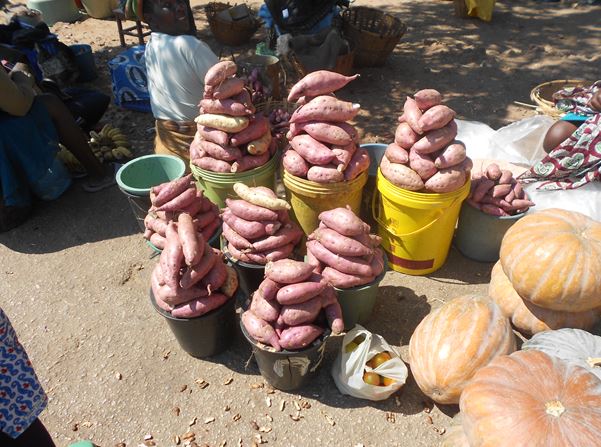Technologies for preserving indigenous African food are long overdue
For many decades, African countries have lagged behind in terms of developing technology for preserving indigenous food systems. What has worsened the situation is that the colonial system brought its own food and seed systems into Africa supported by appropriate technology for processing and preserving food. A lot of investments went into adding economic value to exotic food along supply chains to ensure consistent supply all year round for local and external consumers. For instance, the British made sure their food and seed system would meet the requirements of citizens in African colonies while also supplementing demand in Britain. Both local and export demand was also met through international corporates that supported contract production with appropriate technology to ensure consistent supply of food and nutrition.

On the other hand, diverse food preservation methods developed by African fore-fathers have languished in oblivion due to lack of support. For instance, in East and Southern such preservation methods include Pfimbi for sweet potatoes, sun and/or fire drying of meat (chimukuyu), cooking and/or sun-drying of fresh vegetables (mufushwa) and many others for commodities like sweet reeds, pumpkins and others.
It is unfortunate that post-colonial African policy makers have not invested in upgrading and extending the indigenous knowledge systems around food preservation technologies developed by the fore-fathers. Instead, most governments continue to promote exotic food, shunning indigenous food which is a source of uniqueness in the global market.
Key characteristics of indigenous food systems
Indigenous food commodities are mainly rain-fed and seasonal. They are also characterized by high production in specific regions influenced by suitability of climatic conditions. For instance, one region can have high rainfall while another region receives low rainfall. In all these different regions are diverse crops, fruits and animals that do well during specific seasons. Where these commodities do well naturally, they are key economic drivers and sources of income and livelihoods for local communities. Being seasonal, during peak seasons, most commodities are often found in abundance, beyond what local communities can consume. Gluts also tend to be common in local markets where these commodities are supposed to generate income for local communities.
In addition to gluts causing local commodities to earn below economic value in the form of low and giveaway prices, physical losses are also common as commodities which rot are thrown away. Besides loss in physical value, there is also loss in nutrition and income. During the off-season, the opportunity cost incurred during gluts see household income, nutrition and the size of food baskets drastically going down. Other benefits that could accrue from preserving surplus commodities during gluts are also lost. More importantly, since most indigenous food commodities are rainfed, they tend to ripen all at once. For countries that have one rainfall season (October to April), it means these commodities are off the market and not part of household food baskets for half the year.
This situation forces these communities that at one time have surplus food to depend on formal markets that have appropriate technologies for processing and preservation. Low- income urban consumers that mostly rely on mass food markets also face the same dilemma because these markets lack appropriate food preservation technologies. Urban consumers either stretch their meagre budgets to buy highly priced processed and imported food from formal markets or they go without those commodities or resort to imported food.
Benefits of food preservation
Food preservation technology will have several benefits for indigenous food, consumers, farmers and mass market traders, among other actors:
- Addressing seasonality of production system – preservation will increase the shelf life by making sure food and related nutritional elements are available all year round.
- By rationalizing market supplies, preservation will ensure surplus commodities are preserved and economic quantities are supplied in response to demand while preserved stocks are released to the market slowly in ways that sustain the economic value of the food commodities.
- Reduction in physical loss caused by rotting or throwing away when the commodities fail to get a market on time.
- Consumers will get the commodities in a natural state unlike processed food that is preserved with chemical additives or preservatives that distort the natural state, flavor and nutrition. The long-term effect of chemical preservatives remains unknown.
Improving the return on investing in Agriculture and food systems
Food preservation will improve the Return on Investing (ROI) in agriculture and food systems by regulating supplies to ensure economic prices are realized throughout the season. What African policy makers are failing to consider is that when a farmer earns below economic prices, it is the agriculture economy that suffers because the farmer uses soil, water, inputs and other national assets. Preservation does not only reduce physical losses but increase economic returns. That is why it is not enough to record volumes of commodities without recording economic returns.
Capturing volumes and returns is critical because it guides informative comparative analyses for better decision making. For instance, where 100 tons of fruits are sold at USD200/ton during the peak season, the farmer or community earns USD20 000. But 50 tons of the same commodity sold during the off-season at USD500/ton generate USD25000. This scenario shows that if the 100 tons are rationalized through preserving excess surplus, the preserved 50tons will fetch USD25000. The opportunity cost of releasing 100tons at once at USD200/ton is USD30000 when compared to preserving and releasing the commodity at USD500/ton during the off-peak period. On the other hand, the benefit of preservation will also be USD30000. This scenario applies to an individual farmer or community and to markets, showing the benefits from preserving excess commodities.
charles@knowledgetransafrica.com / charles@emkambo.co.zw / info@knowledgetransafrica.com
Website: www.emkambo.co.zw / www.knowledgetransafrica.com
Mobile: 0772 137 717/ 0774 430 309/ 0712 737 430
